
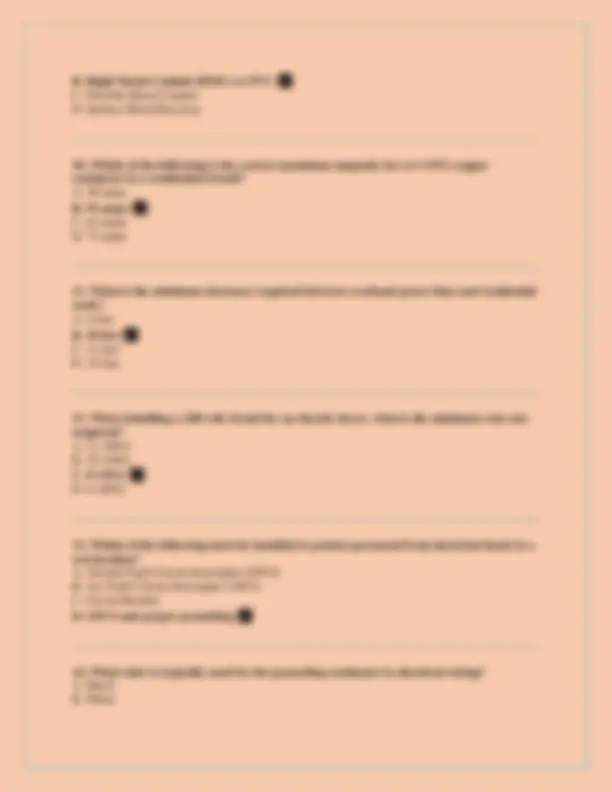
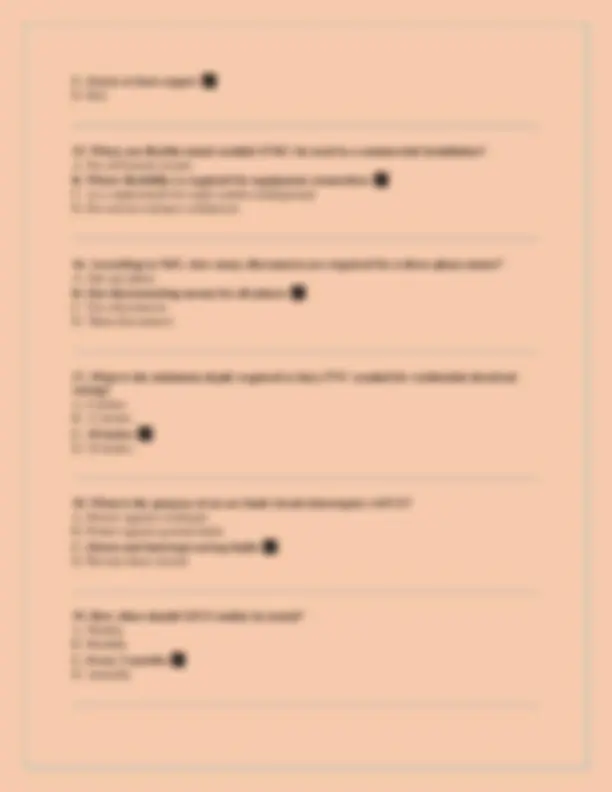
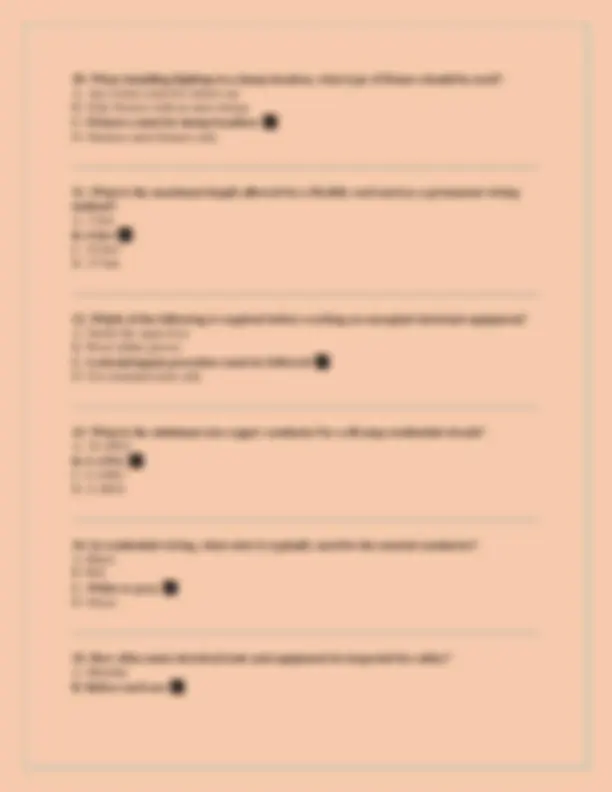
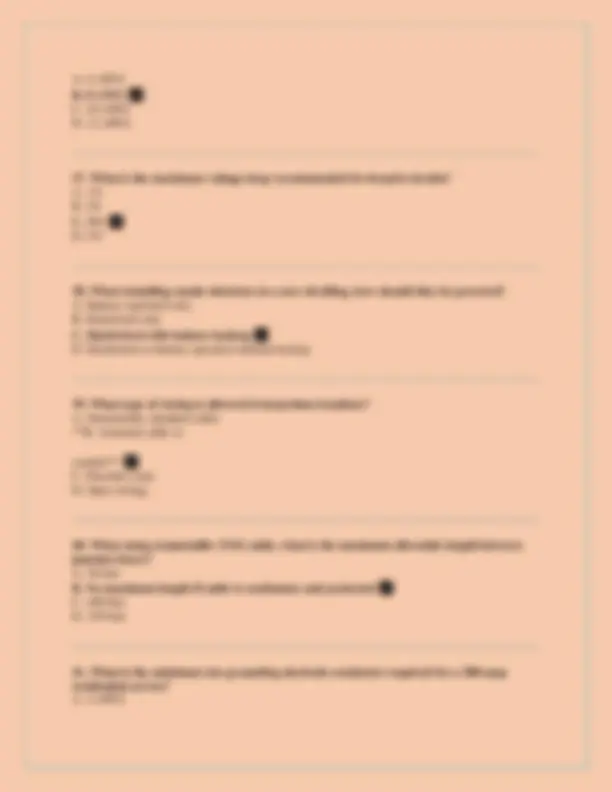
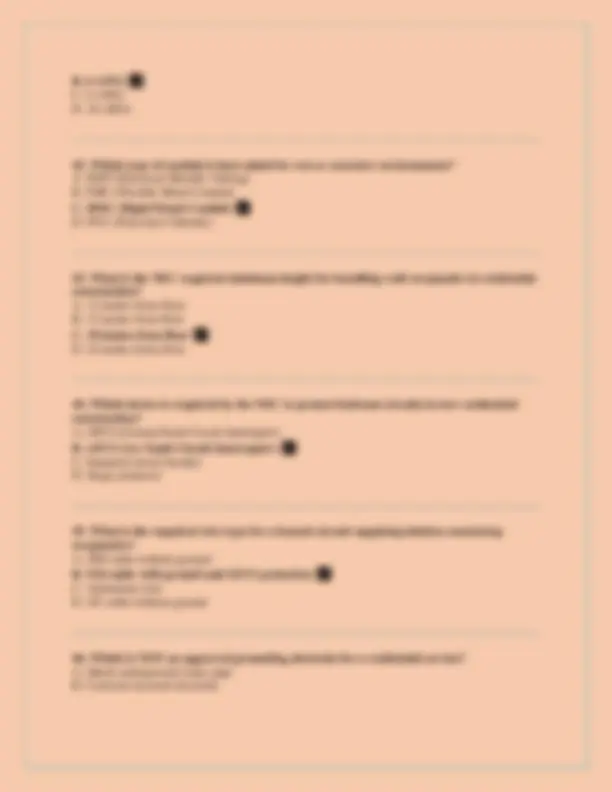
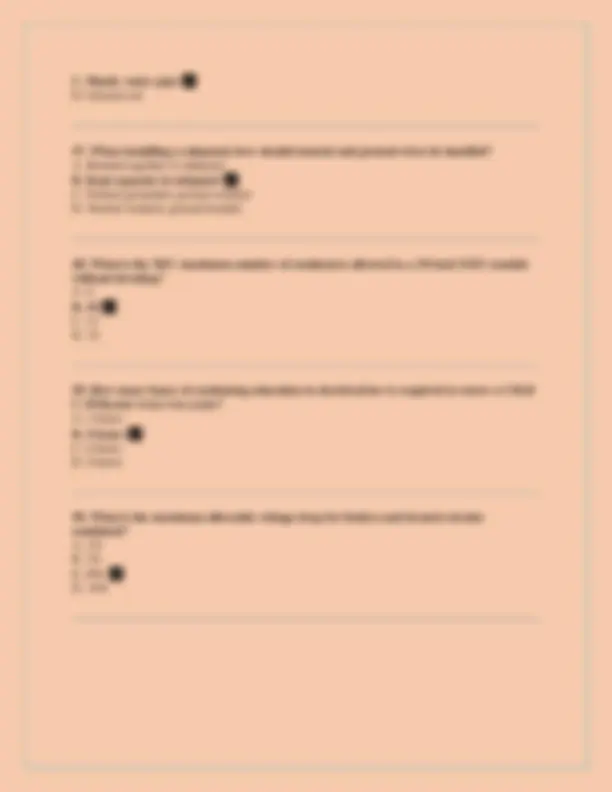


Study with the several resources on Docsity

Earn points by helping other students or get them with a premium plan


Prepare for your exams
Study with the several resources on Docsity

Earn points to download
Earn points by helping other students or get them with a premium plan
Community
Ask the community for help and clear up your study doubts
Discover the best universities in your country according to Docsity users
Free resources
Download our free guides on studying techniques, anxiety management strategies, and thesis advice from Docsity tutors
A comprehensive practice exam for the cslb c-10 electrical contractor licensing, featuring 50 multiple-choice questions with answers. It covers essential topics such as nec code compliance, grounding, circuit protection, wiring methods, and safety regulations. The exam is designed to help candidates prepare for the california electrical license and ensures a thorough understanding of electrical standards and practices. It includes questions on conductor sizing, conduit requirements, gfci and afci protection, and working space clearances, making it an invaluable resource for exam preparation and professional development. This practice exam is an excellent tool for electrical professionals seeking to validate their knowledge and skills in electrical contracting.
Typology: Exams
1 / 10

This page cannot be seen from the preview
Don't miss anything!







C. Green or bare copper ✅ D. Red
C. Plastic water pipe ✅ D. Ground rod